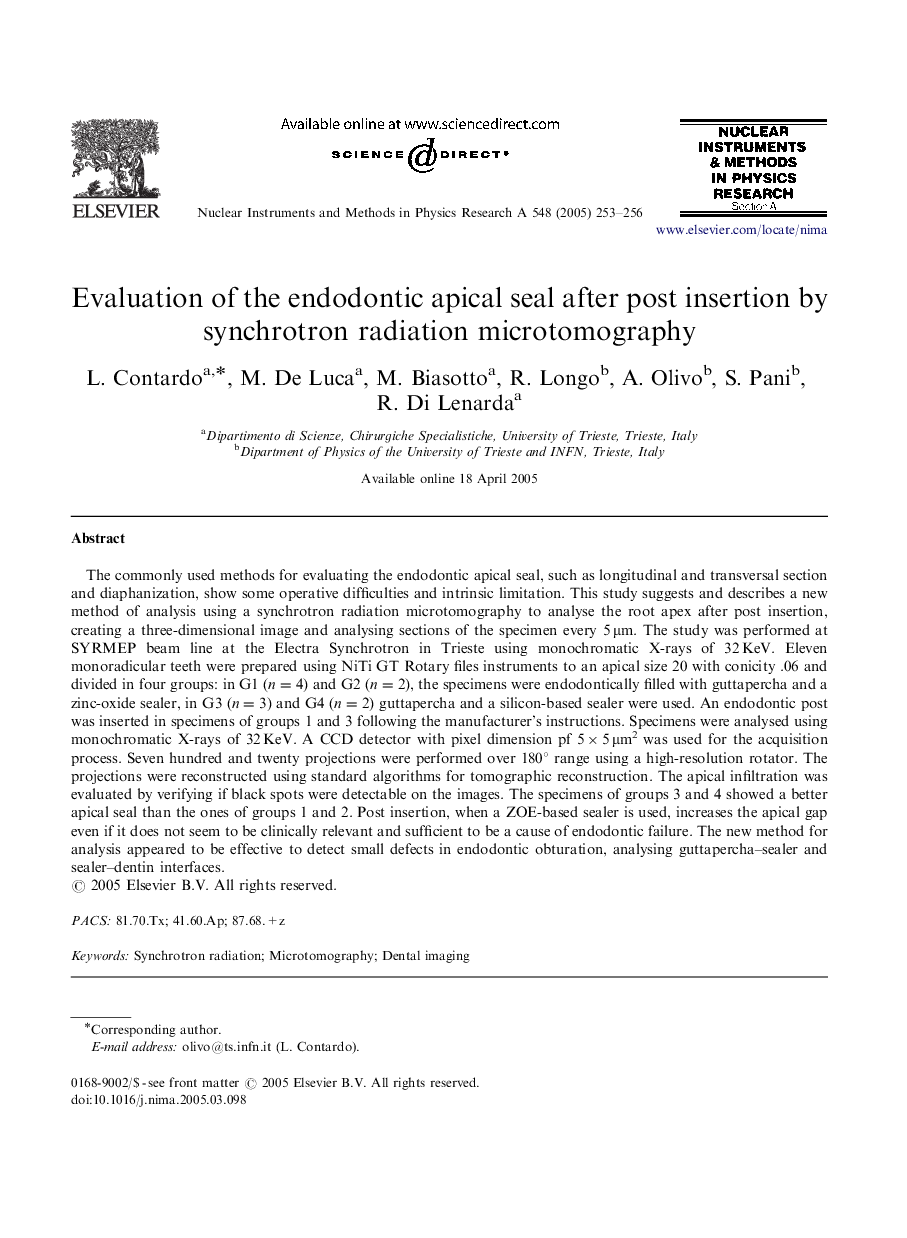| Article ID | Journal | Published Year | Pages | File Type |
|---|---|---|---|---|
| 9845258 | Nuclear Instruments and Methods in Physics Research Section A: Accelerators, Spectrometers, Detectors and Associated Equipment | 2005 | 4 Pages |
Abstract
The commonly used methods for evaluating the endodontic apical seal, such as longitudinal and transversal section and diaphanization, show some operative difficulties and intrinsic limitation. This study suggests and describes a new method of analysis using a synchrotron radiation microtomography to analyse the root apex after post insertion, creating a three-dimensional image and analysing sections of the specimen every 5 μm. The study was performed at SYRMEP beam line at the Electra Synchrotron in Trieste using monochromatic X-rays of 32 KeV. Eleven monoradicular teeth were prepared using NiTi GT Rotary files instruments to an apical size 20 with conicity .06 and divided in four groups: in G1 (n=4) and G2 (n=2), the specimens were endodontically filled with guttapercha and a zinc-oxide sealer, in G3 (n=3) and G4 (n=2) guttapercha and a silicon-based sealer were used. An endodontic post was inserted in specimens of groups 1 and 3 following the manufacturer's instructions. Specimens were analysed using monochromatic X-rays of 32 KeV. A CCD detector with pixel dimension pf 5Ã5 μm2 was used for the acquisition process. Seven hundred and twenty projections were performed over 180° range using a high-resolution rotator. The projections were reconstructed using standard algorithms for tomographic reconstruction. The apical infiltration was evaluated by verifying if black spots were detectable on the images. The specimens of groups 3 and 4 showed a better apical seal than the ones of groups 1 and 2. Post insertion, when a ZOE-based sealer is used, increases the apical gap even if it does not seem to be clinically relevant and sufficient to be a cause of endodontic failure. The new method for analysis appeared to be effective to detect small defects in endodontic obturation, analysing guttapercha-sealer and sealer-dentin interfaces.
Related Topics
Physical Sciences and Engineering
Physics and Astronomy
Instrumentation
Authors
L. Contardo, M. De Luca, M. Biasotto, R. Longo, A. Olivo, S. Pani, R. Di Lenarda,
